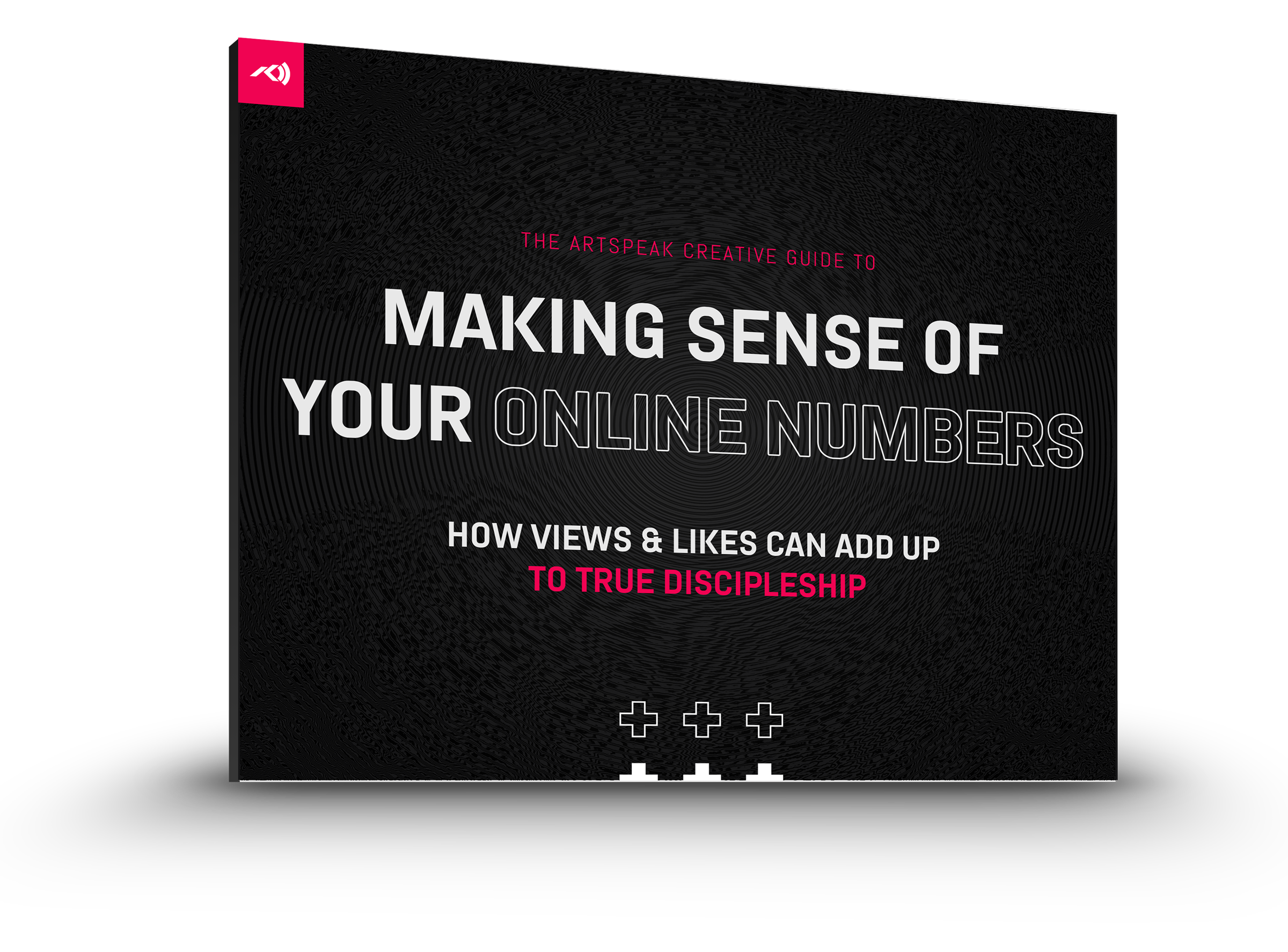
Making Sense of the Numbers
How Views & Likes Can Mean True Discipleship
By: Jason Bowman | Communications & Marketing Web Design & Development
Are we still reaching people?
The COVID-19 crisis pushed the whole world into the future. Suddenly, most congregations went from online services as an afterthought to online services being the only way to gather.
The learning curve has been steep, but so many churches across the country are absolutely crushing it right now. As we’ve talked to several church leaders from congregations of all sizes, they’ve all said their online numbers are better than their average weekly attendance!
But, when they report their online numbers to us, they almost always follow it by saying, “I think that’s good.”
Because even though we have access to in-depth analytics, almost everyone is asking, “What do these numbers mean, and how do I make sense of them?” Then, “What do I even do with that knowledge?”
That’s why we interviewed ArtSpeak Social Media Champion Andrew Arrol. He served as the online pastor at a thriving multisite church in Pennsylvania, and now serves several of our clients.
Watch the video above for his answers to these questions and more. Read below for the key takeaways from our talk.

Measure What’s Important to Your Church
First, online church is meant to be an extension of church in-person. Whatever you measure when the church is together, make sure you measure that online:
- Attendance (more on how to calculate that below)
- Engagement (also a tricky number—keep reading)
- Next steps
- Small group involvement
- Discipleship
- New believer’s class attendance
How to Weight the Numbers
The first thing most of us do is count “views,” but that number can be deceptive. You’ll have to look at these numbers a little more deeply to understand what’s really going on.
- Count IP Addresses. If someone refreshes their screen several times while watching a service, each refresh will count as a view. Instead, count the number of IP addresses present at any given online service.
- Multiply the number of IP addresses by 1.7. Though it’s true families watch together at home, sometimes multiple people in a single family will watch from different devices or host watch parties.
- Measure each channel separately. Church Online Platform, Facebook, and YouTube all have different purposes and draw different types of viewers.
- Weight different types of engagements. It doesn’t matter what formula you use to arrive at your “engagement” number as long as you measure what matters to you and that it’s trending upward. At ArtSpeak, we weigh:
- A “like” as a “1”
- A comment as a “2”
- A share, save, or profile visit as a “3”
- Measure Next Steps. Church Online Platform allows people to virtually “raise their hand” to receive Christ. You can also measure who filled out an opt-in form on a landing page (keep reading for more about landing pages).
Download The Guide To Help Make Sense of Your Numbers.
Download The Guide To Help Make Sense of Your Numbers.

Use Facebook Intentionally
Remember, church online should mimic church in-person. You’re using different tools but aiming to accomplish the same things: To help people take steps into a deeper relationship with God and the church community.
A simple way to do this is through Facebook Groups. They’re easy to create, and once you have them set up, they provide high value and require minimal ongoing effort.
Take Online Volunteering Seriously
As Andrew pastored his online congregation, he had volunteers who would run online groups and be present for people during services. He would tell volunteers, “Engage people with their name.”
Those volunteers developed real relationships with the people in the online church community. People would often come to a church service just so they could meet the person who they interacted with online every week!
It’s easy to say, “That’s trivial—that’s not real volunteering.”
But Andrew pushed back, saying, “The truth is this: Waving at somebody when they pull in the parking lot at church seems trivial, but it means a lot to the person who’s pulling in for the first time. So is saying hello to somebody online.”

Get People to Take Action
Finally, to engage people online more effectively, find ways to get them to landing pages. Here are two types of landing pages to consider.
- First-time decisions page. Here, people can share that they received Jesus and enter their information. From there, follow up is vital. Set up an email drip that will give people great content and invite them to get more involved.
- Next-steps page. Create a page that allows people to opt-in to learn what’s next, from a Facebook group to discipleship classes to online small groups.

Keep Changing Lives!
We’re so glad to be connected with people who are doing the work of the Church, making a difference. We want to encourage everyone with this: It’s a new day. We’re on a learning curve, but it’s a necessary one for the twenty-first century.
RELATED – If you’re a church creative managing messaging, visual identity, strategy, or all three at the same time—we get it, the fear of burnout is real! That’s why we created the ArtSpeak Creative Community. Restore your health and rediscover your creative purpose. Learn more here.

DOWNLOAD: Making Sense of Your Online Numbers
This downloadable PDF will unlock this mystery for you. It will also give you practical tips to increase your ability to reach people. Learn how to touch more lives, lead them into discipleship, and build a life-giving community through social media and more.
